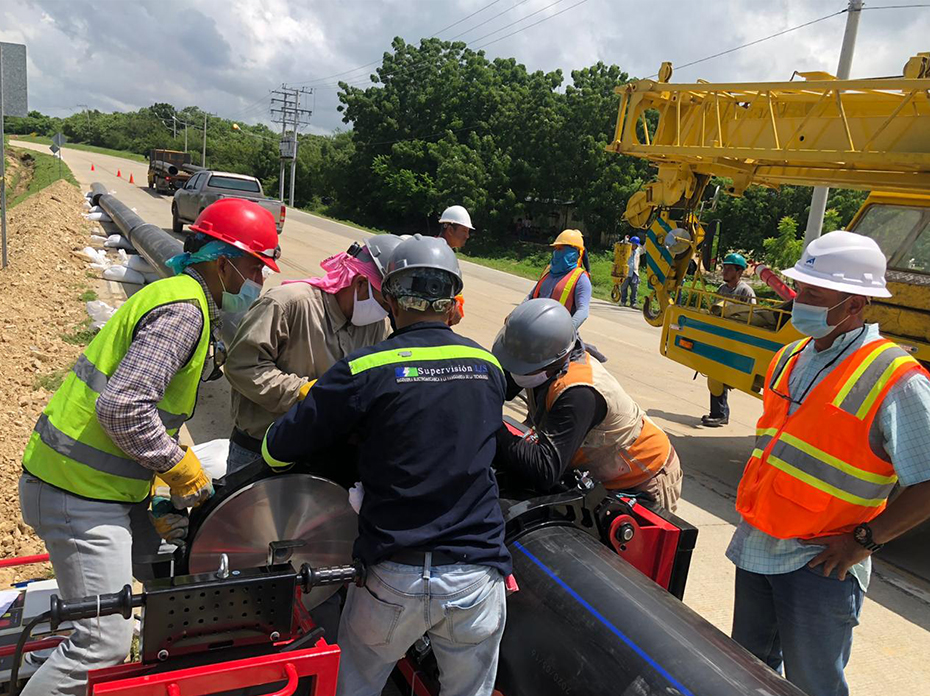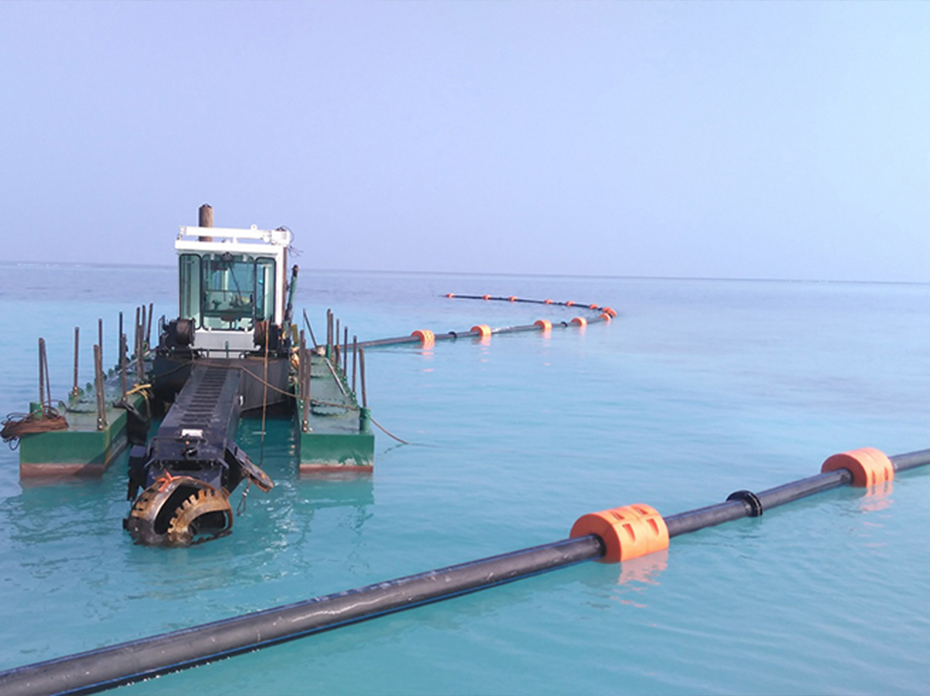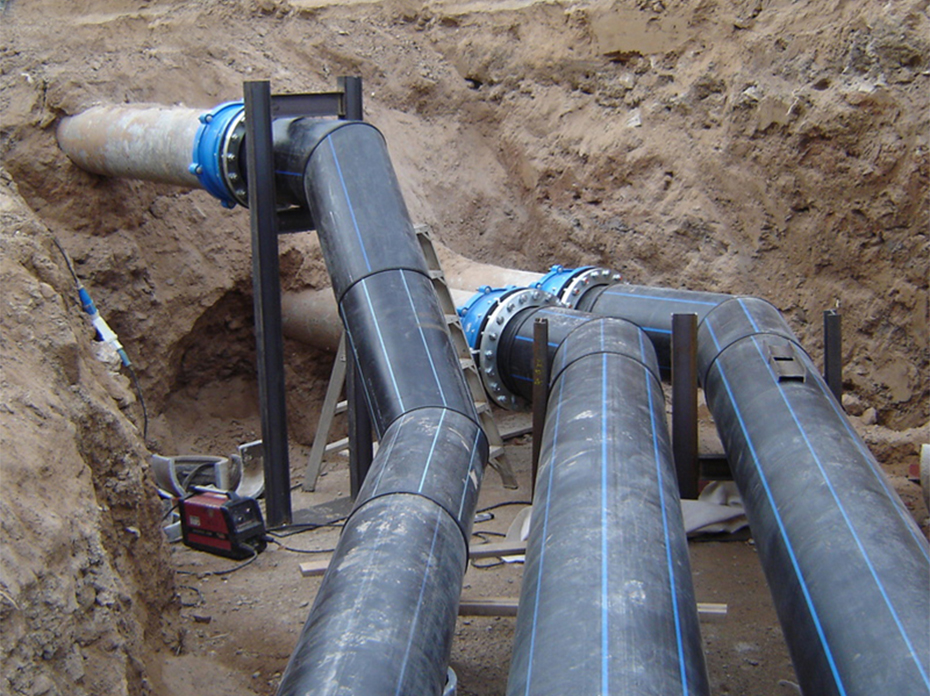Dredging engineering refers to the process of clearing, widening, or deepening water bodies such as rivers and lakes through underwater excavation using either manpower or machinery. The main purpose of dredging pipes is to transport and remove sediment, sludge, and other debris.
Traditionally, dredging pipes were predominantly made of steel. However, steel pipes are prone to rust, corrosion, and high transportation costs. With increasing engineering requirements, steel pipes gradually fail to meet market demands, leading to the emergence of HDPE dredging pipes.
HDPE dredging pipes are most suitable for sediment transport and discharge, and they possess the following product characteristics.
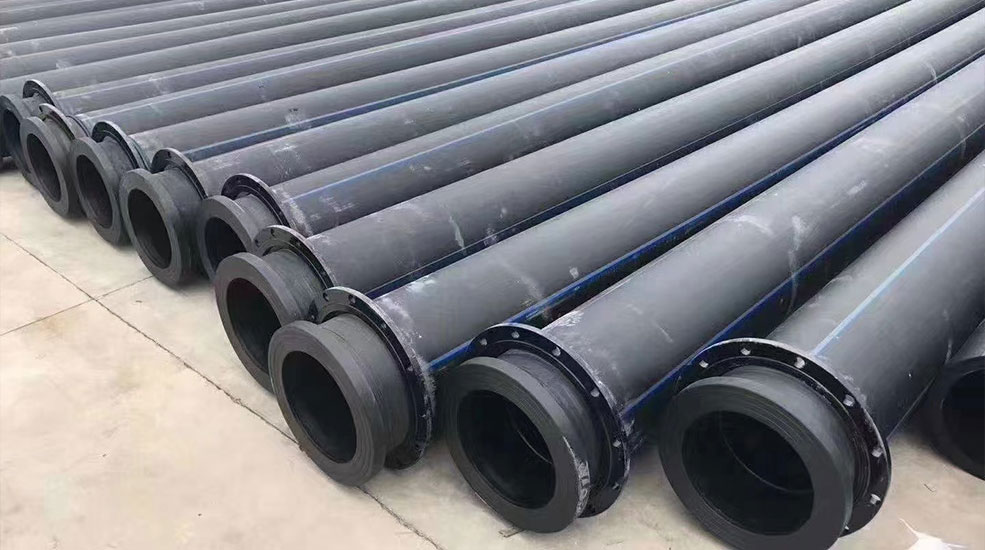
Product characteristics
- Lightweight
HDPE pipes weigh only 1/8th of steel pipes of the same diameter. They can be easily transported and installed using flanges and bolts, resulting in cost savings. - High toughness and tensile strength
HDPE pipes do not break under internal and external impacts, and they exhibit strong resistance to waves, making them highly suitable for water operations. - Excellent UV resistance and aging resistance
HDPE pipes have a longer service life compared to iron pipes, PVC pipes, nylon pipes, and ordinary plastic pipes due to their superior UV resistance and aging resistance. - Outstanding smoothness and abrasion resistance
HDPE pipes have over four times the abrasion resistance of steel pipes. They can be used normally for 5-8 years and offer a friction coefficient lower than that of steel pipes, thereby increasing transport capacity by approximately 20%. - Patented joints
HDPE pipes feature movable flange connections, eliminating the need for welding seams. The pipes are directly connected using bolts, ensuring no deformation, breakage, or leakage during long-term use, frequent installation, and disassembly, thus ensuring efficient transport. - Low construction cost and strong environmental adaptability
HDPE pipes can be used in temperatures ranging from -40°C to 60°C, making them adaptable to harsh climate changes. Whether in water or on land, HDPE pipes offer low construction costs, high efficiency, and greater convenience.
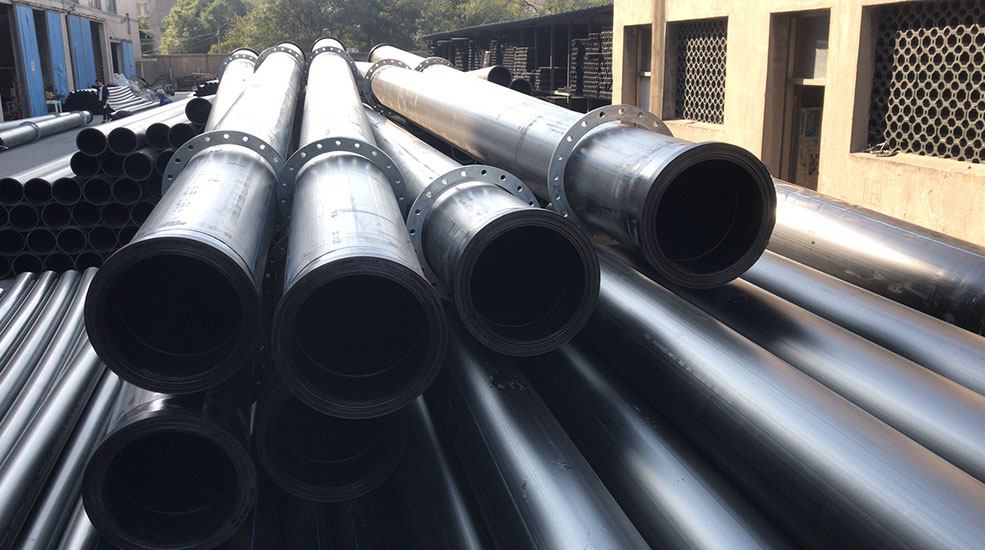
Applications
- Transportation of dust and coal ash in thermal power plants.
- Conveyance of mine tailings and slurry in the mining industry.
- Transport of coal powder and coal-water slurry in coal preparation plants.
- Conveyance of slag slurry and corrosive media in the chemical industry.
- Transportation of crude oil and petroleum.
- Dredging or sand suction projects, conveying sand, sludge, and seawater in marine engineering.
In recent years, the demand for environmental standards has increased. Preventing and minimizing the pollution of water bodies and land due to dredging activities has become an important consideration in dredging engineering. The removal of underwater contaminated soil through dredging methods and subsequent engineering treatment has also become a significant aspect of dredging projects.
HDPE dredging pipes surpass traditional steel pipes in terms of transport capacity, transport environment, and cost. They can be recycled, meet environmental protection and energy-saving standards, and are the preferred choice for dredging projects.
You are welcome to : phone call, Message, Wechat, Email& Seaching us, etc.









